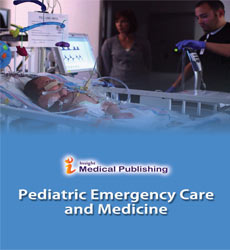Abstract
Drip Infusion Cholangiography with Computed Tomography in the Evaluation of Bile Leakage after Blunt Liver Trauma in Children: Two Case Reports
Bile duct injury following blunt liver injury is rare, and the precise site of bile leakage is often difficult to identify with noninvasive techniques. Endoscopic retrograde cholangiopancreatography is being used increasingly more often in the evaluation and management of biliary disorders in children. However, it is invasive and often requires general anesthesia in children. Drip infusion cholangiography with computed tomography (DIC-CT) is reportedly a noninvasive, safe way to diagnose and localize the site of bile leakage. We herein report two pediatric cases of bile leakage after blunt liver trauma in which DIC-CT was helpful in the case management decision-making process. DIC-CT could be a very powerful
Author(s):
Otake K, Uchida K, Nagano Y, Noguchi T, Shimura T, Matsushita K, Inoue M and Kusunoki M
Abstract | Full-Text | PDF
Share this

Google scholar citation report
Citations : 50
Abstracted/Indexed in
- Google Scholar
- International Committee of Medical Journal Editors (ICMJE)
- Secret Search Engine Labs
Open Access Journals
- Aquaculture & Veterinary Science
- Chemistry & Chemical Sciences
- Clinical Sciences
- Engineering
- General Science
- Genetics & Molecular Biology
- Health Care & Nursing
- Immunology & Microbiology
- Materials Science
- Mathematics & Physics
- Medical Sciences
- Neurology & Psychiatry
- Oncology & Cancer Science
- Pharmaceutical Sciences

